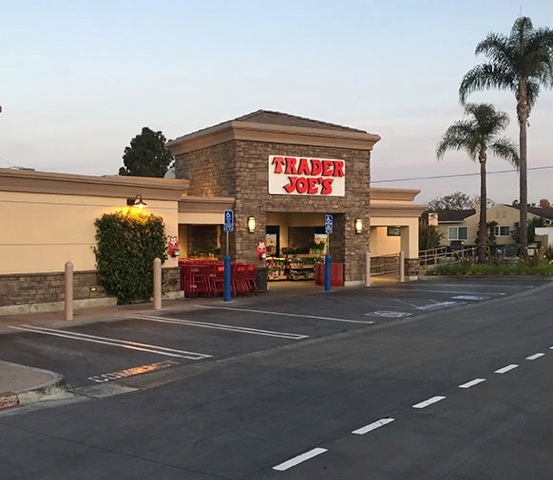THE HUTCHINSON REPORT
By Earl Ofari Hutchinson
Contributing Columnist
It started innocently enough for me. I happened to be in West Los Angeles and wanted to make a quick food purchase.
I stopped in at a Smart & Final in the area. On the first step inside I saw everything that I and countless others have long noted and long complained about.
The store looked like a gourmet palace. It had wide aisles, was super well lit, had many cheerful attendants there to help, a speedy cashier checkout, and most importantly, a wide array of modestly priced quality foods and disposable items.
It was the classic prototype of a chic, classy, upscale market in a high-income Westside neighborhood. The West L.A. Smart & Final store stood in glaring contrast to the Smart & Final stores I have shopped at in South L.A. from the layout of the store to the quality of products and pricing.
The contrast drove home once more several bitter truths about race in America. The poor, especially the Black poor, pay more and get less for their dollar. The second bitter truth is that big, classy, upscale chain stores that operate in the West L.A.’s of America look and operate differently than the ones they place in the South L.A.’s of America.
There is yet another bitter racial truth about these stores and their operations. They simply don’t operate in poor, Black neighborhoods such as South L.A. The poorer quality of stores that are there, or their total absence, has its own nefarious term “supermarket redlining. It’s the worst kept open secret that Whole Foods, Trader Joe’s and Sprouts will not operate in South L.A.
There have been endless complaints and demands from residents including mid and high-income Black residents for the stores to open shops in these areas. The response from the corporate executives has been varied.
The areas are not profitable. The quality of trained workers isn’t there. The areas are high-crime areas. This would drive up operating costs due to the need for greater security and the greater potential of fire and property damage.
These apologetics have been debunked and residents have called these lame excuses nothing but rationales for racism.
The figures certainly tell the sordid tale of supermarket redlining. According to a survey by CNN Business, nearly 20% of mostly Black neighborhoods had limited or no access to supermarkets of any type. That compared to less than 10% of white neighborhoods.
The wholesale flight of some major chain markets from South L.A. accelerated following the Watts Riots in 1965 and the 1992 riots. Some gradually came back but attempts to attract the newer upscale markets such as Whole Foods have gone nowhere. It was just simply much easier — and more profitable and safer — to set up shop in West L.A.
One organization, the Institute for Local Self-Reliance, flatly contends that the major market chains have a standardized demographic location profile that specifies which communities are high-income and not African American. This ensures that a South L.A. will perennially come up on the short end when it comes to corporate decision making on where to locate a new market, and what kind of products will go in the new store.
Supermarket corporate executives don’t try to hide this. They will tell you that it’s a matter of pure economics, profitability and real estate costs that drive all decisions on where to locate a market.
They are adamant that the decision has nothing to do with race, which flies in the face of another reality. Supermarkets for years have operated stores in place such as South L.A. and then suddenly pulled up stakes and relocated to suburban areas.
The stores were making money in South L.A. But the growing fears of safety fueled by a healthy dose of the standard racial stereotypes about Black crime and violence also instilled fear in corporate supermarket decision-makers.
The irony is that the claim that middle- and upper-class whites have higher incomes and spend more than Blacks doesn’t hold water.
Countless studies have shown that Blacks spend a far greater percentage of their income than whites on food items and other consumer products. Blacks have often been called the ultimate consumer purchaser in America because of their propensity to spend.
Yet, Black spending power has not offset the belief that a well-stocked market in the suburbs offers the potential for far greater profits than one in South L.A. The problem of lesser quality foods and items and the complete absence of upscale markets in South L.A. were made worse by the rash of mergers and buyouts in the 1980s.
The result: fewer markets owned by a relative handful of conglomerate chains. The predictable quickly happened: the new mega-chains shut down a wave of stores. The first to go were those in inner-city communities.
Los Angeles County, for instance, had over 1,000 markets in 1970. Twenty years later, the number was half that. The number has continued to steadily drop since then. So, finding a big, glitzy, well-stocked Smart & Final in West L.A. and not South L.A. is hardly a surprise. But that shouldn’t stop us from demanding that a change.
Earl Ofari Hutchinson is an author and political analyst. His latest book is “Bring Back the Poll Tax! — The GOP War on Voting Rights” (Middle Passage Press). He also is the host of the weekly Hutchinson Report on KPFK 90.7 FM Los Angeles and the Pacifica Network.












